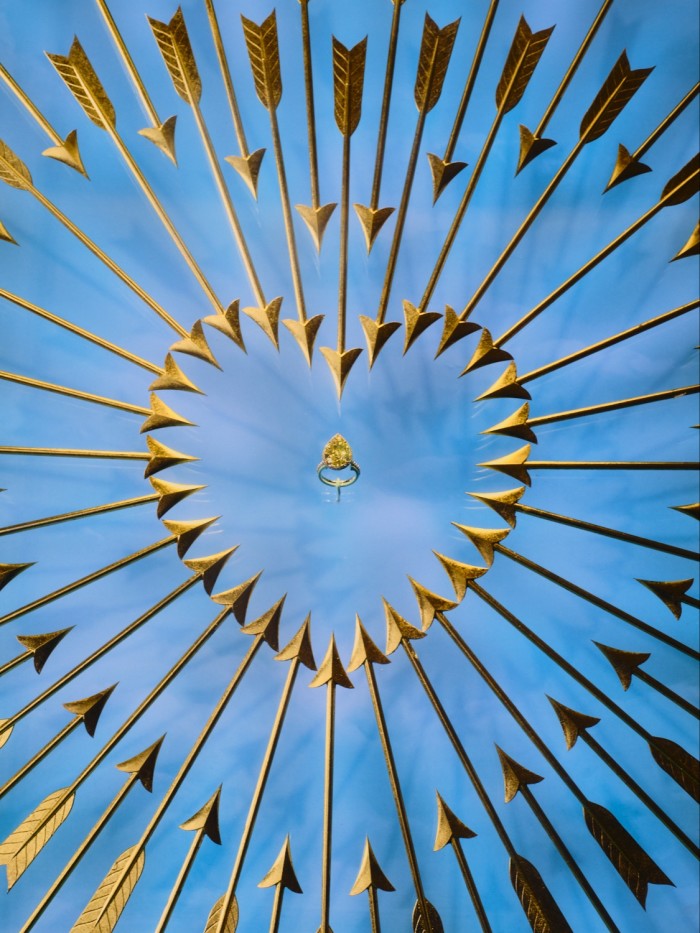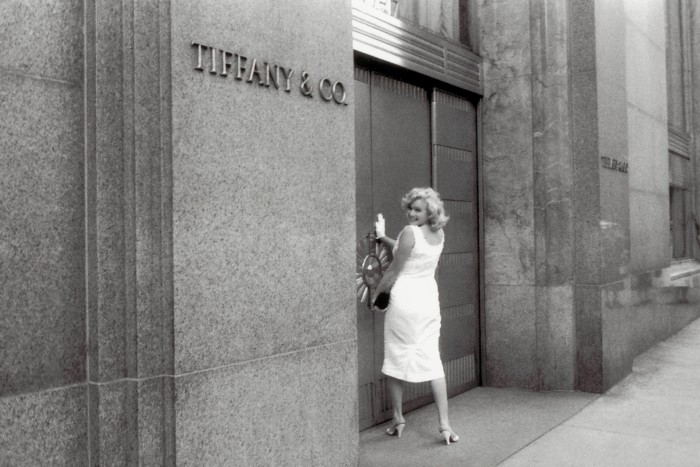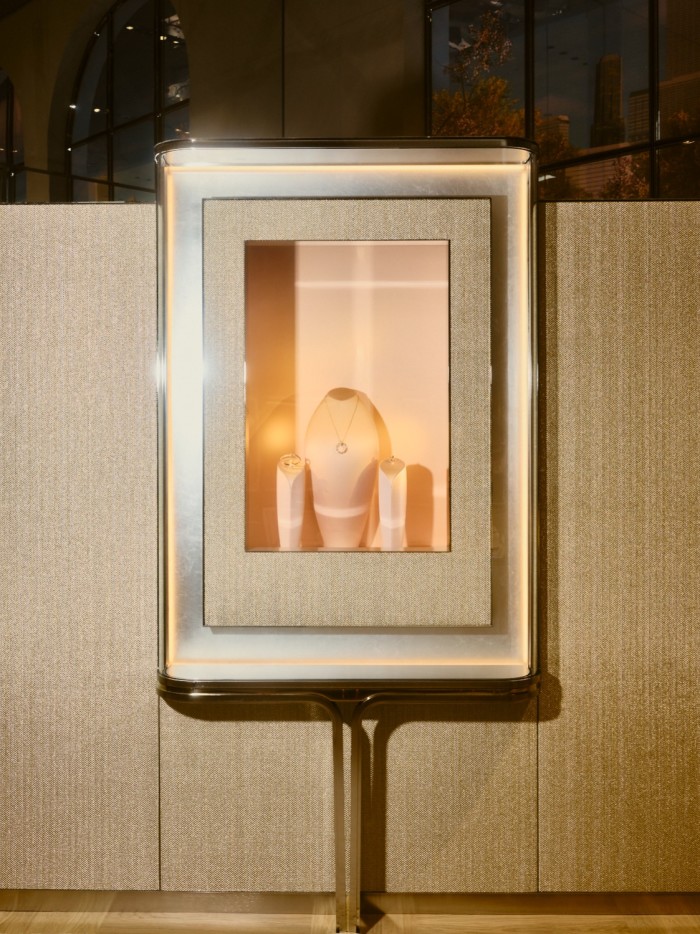Breakthrough at Tiffany’s – a Landmark store for a new order of business

Roula Khalaf, Editor of the FT, selects her favourite stories in this weekly newsletter.
“I thought, to turn this ship around we need to restore its former glory – but how to do it?” says architect Peter Marino of his brief to transform one of the world’s best-known retail landmarks, the Tiffany & Co flagship store in New York, which reopens this month following a full-blown renovation under the management of its proprietor, the French luxury group LVMH. “I consider buying diamonds a frivolity, so should not the atmosphere be playful, fun, pretty? And that philosophically is what I have tried to do,” says Marino.
Transforming the 10,000sq m Tiffany & Co Landmark building that stands at the luxury retail apex of Manhattan into a beacon that bows to the heritage and embraces the now and the future has been no easy feat. Yet such has been the ambition of the LVMH group that bought the brand for $15.8bn in 2021. That the French luxury powerhouse now owns what is arguably America’s only true luxury entity may have ruffled patriotic feathers, but after some lacklustre years it was ripe for an overhaul. Marino, a New York City native, who founded his firm in 1978, poetically and politely refers to it as a “tarnished empress who needed restoration”.


The ’40s store, with its tough-looking granite and limestone façade and vast atrium ground floor, was originally designed by Cross & Cross architects in a “conservative modern” style that spoke of America’s dynamism and sophistication. When LVMH took the keys, the renovation was already under way, with a permit in place for an impressive redesign of floors eight to 10 by OMA practice. With its curtain-like wraparound glass wall, terrace and metal panels, the new look was envisioned as a giant diamond on the skyline and conceived to house exhibitions, event areas and VIP suites. The plan was the newest addition to a series of renovations that have been actioned over the decades, including a three-storey expansion in 1980 and a 2001 renovation by Yabu Pushelberg, but none has been on the scale of this grand makeover.
Marino is well versed in the architectural lexicon of luxury retail: the architect has designed the interiors of Dior, Bulgari, Louis Vuitton and the Cheval Blanc Paris hotel, and his firm was appointed shortly after the LVMH acquisition. Taking on the jewellery store, however, presented new challenges for the architect and designer. “I have done a lot of ready-to-wear shops and you can see the collection from 50ft away. I have never done a 10-floor jewellery store in my career. You can’t see a ring from 10ft away.”


To deal with the “scale problem”, Marino has used art as interventions. There are more than 40 artworks (a mixture of newly commissioned and LVMH-owned pieces) throughout the Tiffany Landmark store on 57th Street and Fifth Avenue, including Jean-Michel Basquiat’s joyous 1982 Equals Pi (which appeared in the Jay-Z and Beyoncé About Love campaign), pieces by Damien Hirst, Julian Schnabel, Hans Hartung, Daniel Arsham and a series of reappropriated Tiffany advertising campaigns by Richard Prince. “We called him and went to his studio in upstate NYC and I grabbed as many as I could… and said, they are mine!” says Marino of the haul.
Another scale feature is a curvilinear 144-step staircase that rises up between floors three and eight, inspired by the amorphic forms of former Tiffany designer, the late Elsa Peretti, who created many of the iconic pieces – the Bone cuff and the Bean – that are now classics. The glass and cerused-oak staircase, topped by a beige leather handrail, is an alternative route to the bank of four escalators that ascend and descend from art-filled vestibules for the million-plus visitors who come to the store annually.
Tiffany turquoise blue (standardised by Pantone as 1837 Blue in 2001) has also been employed, albeit judiciously, and is a currency in the artworks. The store is a tribute to the decorative arts, past and present, and contains an extraordinary collection of furniture, objets and sculpture, by designers including Gio Ponti, André Dubreuil and Ettore Sottsass. With materials ranging from oak parquet and stone for the floors and walls to lacquer work by American artist Nancy Lorenz and a four-ton glass diamond-cut skylight feature, everything shimmers, refracts and reflects. The café, first rolled out as a pop-up experiment in 2017, is now a permanent fixture, with Daniel Boulud overseeing the menu (including the proverbial Breakfast) in the blue-accented dining space. Throughout, 4,090 light fixtures illuminate the jewellery and objets in minimalist display cases. A debut collection by the new Tiffany Home artistic director, society doyenne and fashion retailer Lauren Santo Domingo, will be revealed at the grand opening.


“It is the most extraordinary project in my professional lifetime,” says Anthony Ledru, Tiffany president and CEO. “It is the renovation of the century and I believe the largest for any luxury brand in terms of size and probably investment.” He’s more bashful, however, about putting a figure on it: “The first renovation cost $1mn and it is a little more today,” he says.
There is an illustrious history to parlay. Tiffany & Young was first established as a stationery and fancy goods store at 249 Broadway in 1837 by Charles Lewis Tiffany and John B Young, innovators who would court the society of America’s Gilded Age with inventive, artistic designs. By 1868, the company had spread its wings to Europe with offices and stores in London and Paris. Tiffany was further embedded into American culture when Charles Lewis Tiffany became one of the first patrons of The Met, where a grand collection featuring mosaics and stained-glass works by his artist son, Louis Comfort Tiffany, is on permanent display.
The company was also the go-to for graphic work, having designed invitation cards for the opening of the Brooklyn Bridge in 1883 and the Statue of Liberty in 1886, as well as the Great Seal, used on the one-dollar bill, in 1884. It made trophies including the NFL Vince Lombardi Super Bowl in 1967, took on numerous private commissions and was one of the first luxury houses to promote its star designers, including Jean Schlumberger, Peretti, Paloma Picasso and the lesser-known Donald Claflin.
Tiffany & Co gradually moved uptown from three locations on Broadway to the Renaissance-inspired edifice on Union Square and finally to 57th Street and Fifth Avenue – its sixth NYC location. In 1955, it was bought out by Hoving Corporation, owners of department store chain Bonwit Teller, which boosted Tiffany’s fortunes into the mid-20th century. By the time Audrey Hepburn appeared as Holly Golightly in the Tiffany window, wearing a pearl- and diamond-strung Givenchy dress, coffee cup and croissant in hand, the brand had reinvented itself as a symbol of chic and a magnet of modern aspiration.


With a blockbuster anthology of American design history, institutional standing, societal symbolism and pop-cultural fizz, Tiffany has a lot of dazzling facets to reprise without being too snoringly revivalist. “You can either look like a department store, or a modern luxury landmark – that’s the gap. It is a departure but if you don’t surprise clients you are not in the luxury business,” says Ledru with a leadership mantra that will be ringing in the ears of the store’s 350 staff.
Alexandre Arnault, the 30-year-old EVP of product and communications, who has helped spearhead such collaborations as the Nike/Tiffany sneakers and the Return to Supreme collection, brings a youthful perspective on the hyper-speed proceedings. “I’ve been to the store many times when visiting NYC, whether just to browse or to buy presents or to work on the acquisition,” says Arnault. “Every single person I have met in the city or have interviewed for job positions has a story about the store, whether buying a sweet-16 present or an engagement ring or a present for themselves. That conversation always opens with a smile.”
Arnault stresses that Tiffany was underperforming when compared to the overall growth of the luxury sector between 2011 and 2019. In 2021, Tiffany reported its best ever year, and HSBC projections show revenue increasing from €4.32bn to €6.46bn by 2024. Now’s the time to capture all the good faith, emotion and desire that has flittered off into a myriad of other competitors’ pockets. Product might be king, but with Tiffany, the frisson of culture is the halo and the glue.
For Marino, the image of Holly Golightly staring into an inaccessible and otherworldly store remains the North Star. “This gal from the South, trying to make a glamorous life for herself, goes into the store with George Peppard and they can’t afford to buy anything, and the salesman is uppity and uncheerful,” laughs Marino. “Buying jewellery is frivolous, it is not a necessity like you need a pair of sneakers or an overcoat.”


His mission has therefore been to position things throughout that make you smile. The 700sq m VIP suite on the 10th floor is a distillation of the city’s glamorous past and present. Marino, who started out his practice as a residential designer (Andy Warhol, Agnelli and Yves Saint Laurent were clients), was given carte blanche to design a Marino apartment. “I mean, that’s a cool, cool commission and I put my heart and soul into it,” says Marino of the space that includes a dining room (hung with custom wallpaper and images of hydrangeas in Marino’s Southampton garden), a lounge in shades of beige with views towards Central Park, a bar (boasting an Urs Fischer video work of Tiffany’s emblematic jewelled bird) and a library full of Tiffany archive books that date back to 1850.
There’s an infectious delight about Marino’s grand Landmark vision. Not least because he is a connoisseur who owns a significant collection of mixed-metal objets, including candelabras and coffee sets that he began hunting down in the ’80s. His Tiffany trove is on show at his foundation in Southampton and includes caviar servers. “All the essentials! Who the hell needs that? Somewhat limited use! But they are splendid objects,” he laughs.
Comments